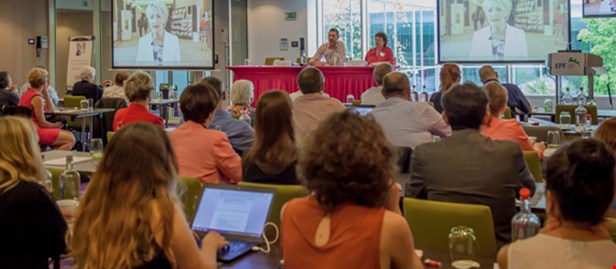Press Release: Is cross-border healthcare working for patients accross the EU?

Brussels, 2 July 2015 – After a series of national and regional events organised in 2013-2015 EPF has organised a major European conference on cross-border healthcare in Brussels, Belgium. Patient leaders from across the EU and National Contact Points (NCPs) met together to discuss on the implementation of the Directive. It emerged from the discussions that patients – and their representative organisations – play a key role in ensuring the Directive effectively “works”.
“We find that a number of Member States appear to have done a good job of transposition. But there are others where we have a number of serious concerns” remarked Health Commissioner Vytenis Andriukaitis who also mentioned the need for a ‘fair’ transposition of the Directive. Among the examples of barriers he provided, he mentioned very elaborate systems of prior authorisation; lower reimbursement tariffs; or difficult administrative requirements.
(In)Equity of access
During the series of conferences it became evident that the implementation of the directive by the member states was still uneven.
Financial barriers are a major threat to equity of access: many patients are not able to afford cross-border healthcare due to the requirement for upfront payment of the treatment and having to cover other related costs, such as travel.
Member states and National Contact Points are asked to proactively work on solutions to alleviate the financial burden on patients, particularly the less well-off.
Information, the keystone
Information, or the lack of it, came to the forefront of the event discussions. The establishment of NCPs for information was patchy and patients were faced with ‘a labyrinth of confusing, sometimes insufficient and sometimes too-detailed information’.
“Implementing the Directive requires all stakeholders to create a culture of transparency and cooperation where they disclose information specifically on how they operate; the availability and cost of care and its safety and quality. This will in turn help patients who are already vulnerable due to the ill health and so may not have the capacity to battle bureaucracy to make use of their rights” said EPF Secretary General Nicola Bedlington.
EPF calls for EU-wide guidelines on how NCPs should provide information to patients, in terms of harmonisation of forms, templates, information on safety and quality, etc. They need to work with patients to ensure that the information they provide meets their needs.
“Our role is to ensure that patients have the right information they need to make informed decisions about cross-border healthcare: information BY and FOR the patient” said Sinisa Bosnjak, the Slovenian Contact Point during the event.
Transparency, the changer
The transparency requirements of the Directive are potentially a huge step towards patient empowerment, the theme of EPF major campaign for 2015. Patients will be able to compare standards between different countries and patient organisations can use this information to advocate for better quality healthcare, both at home and abroad.
However, the Directive does not contain a definition of quality or safety. This is an area where patient organisations can play a valuable role, including by participating at EU level discussions around a common understanding of quality of care.
“A space has emerged for patient organisations to inform patients of their rights and how to go about exercising them; but also to help improve the patient journey overall by working more closely with competent authorities and NCPs. Patient groups now have a clearer view of the intention behind the words of the Directive and are already taking action to even become unofficial contact points in France or Bulgaria for instance” concludes Ms. Bedlington.
What’s next?
In the autumn the European Commission will publish its implementation report. EPF will follow this very closely and take a position on what needs to be improved in consultation with our members and the network of patient leaders.
- Revive the event looking at all pictures on our Facebook gallery here.
- Find all presentations from the event below.
